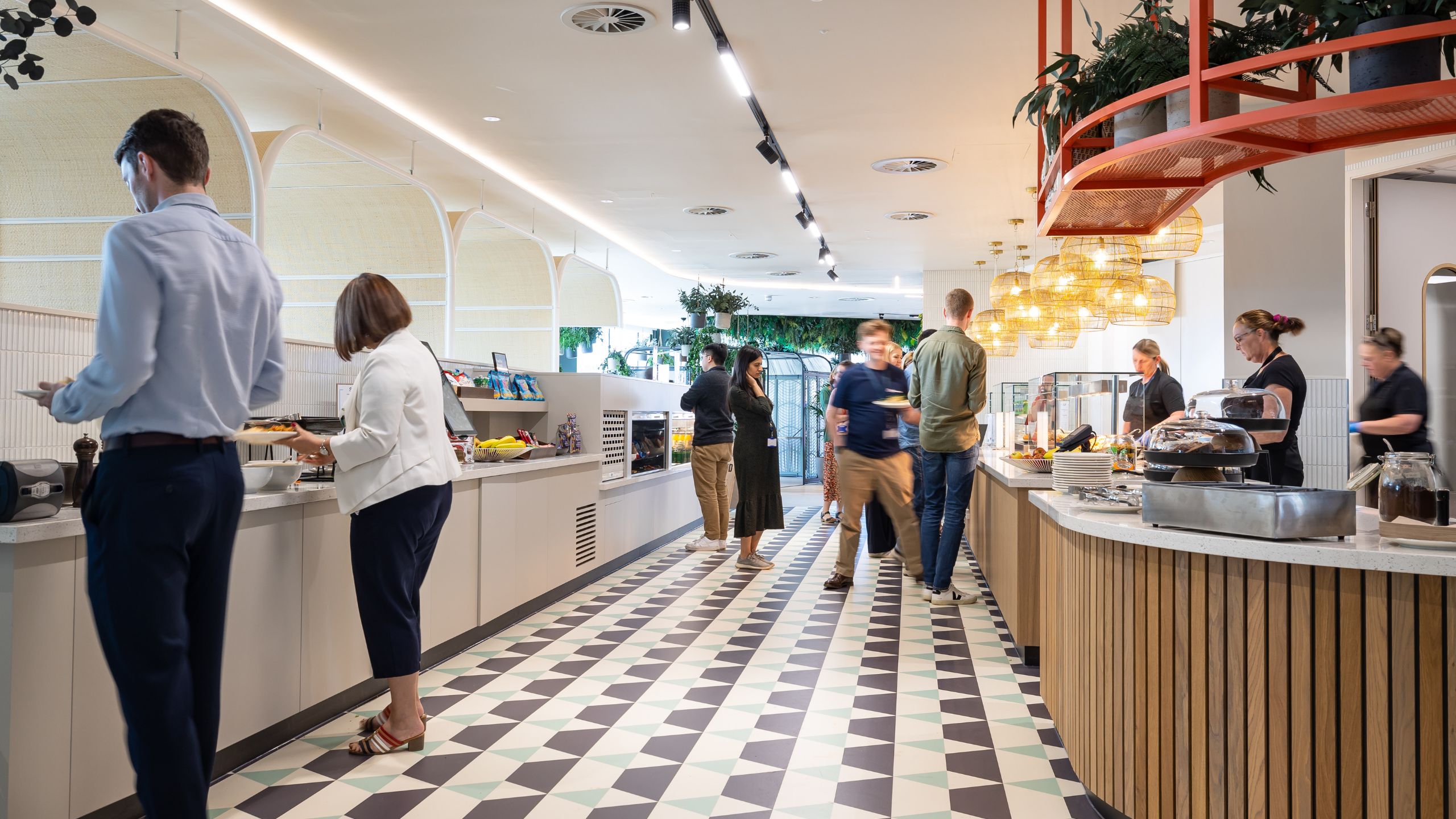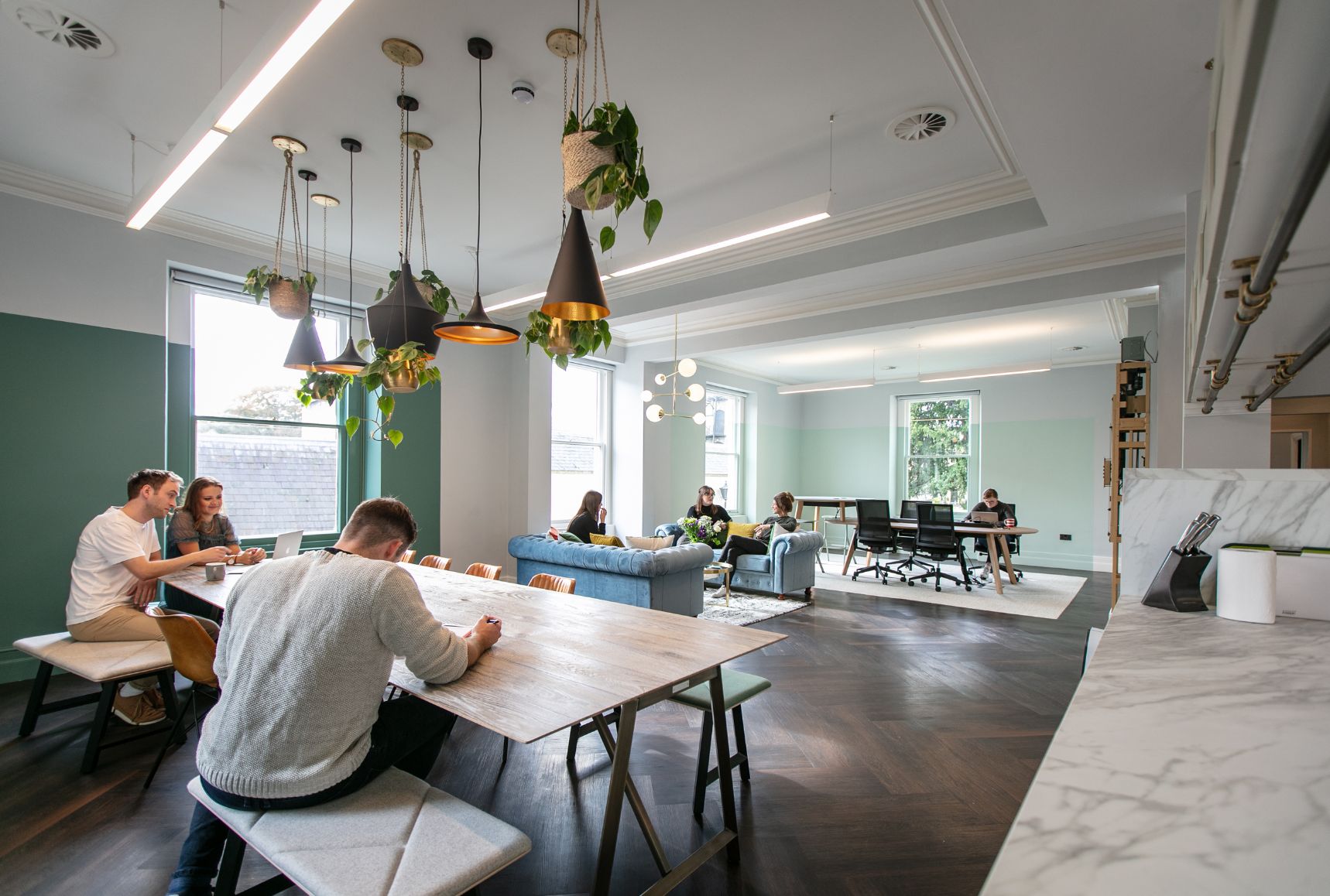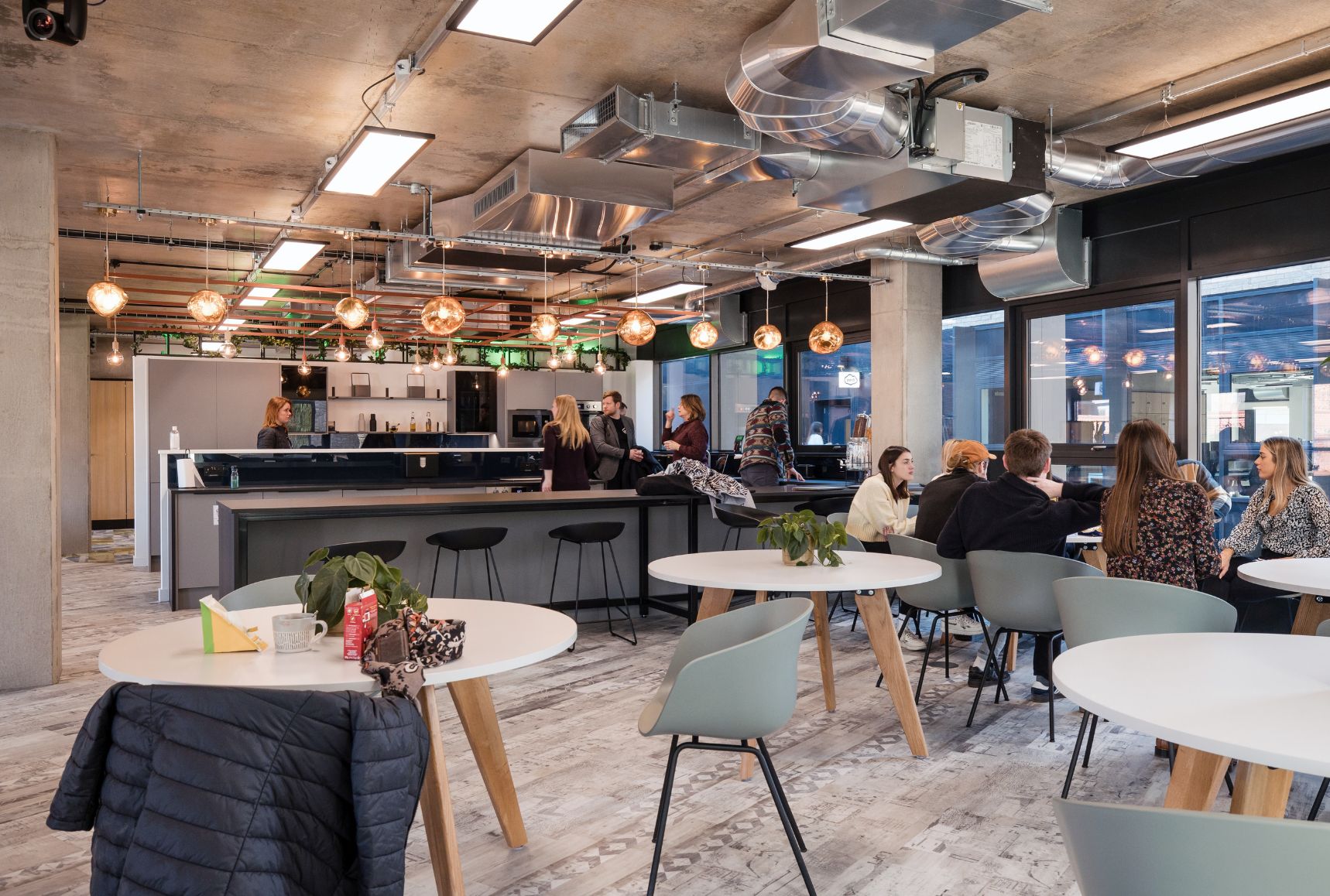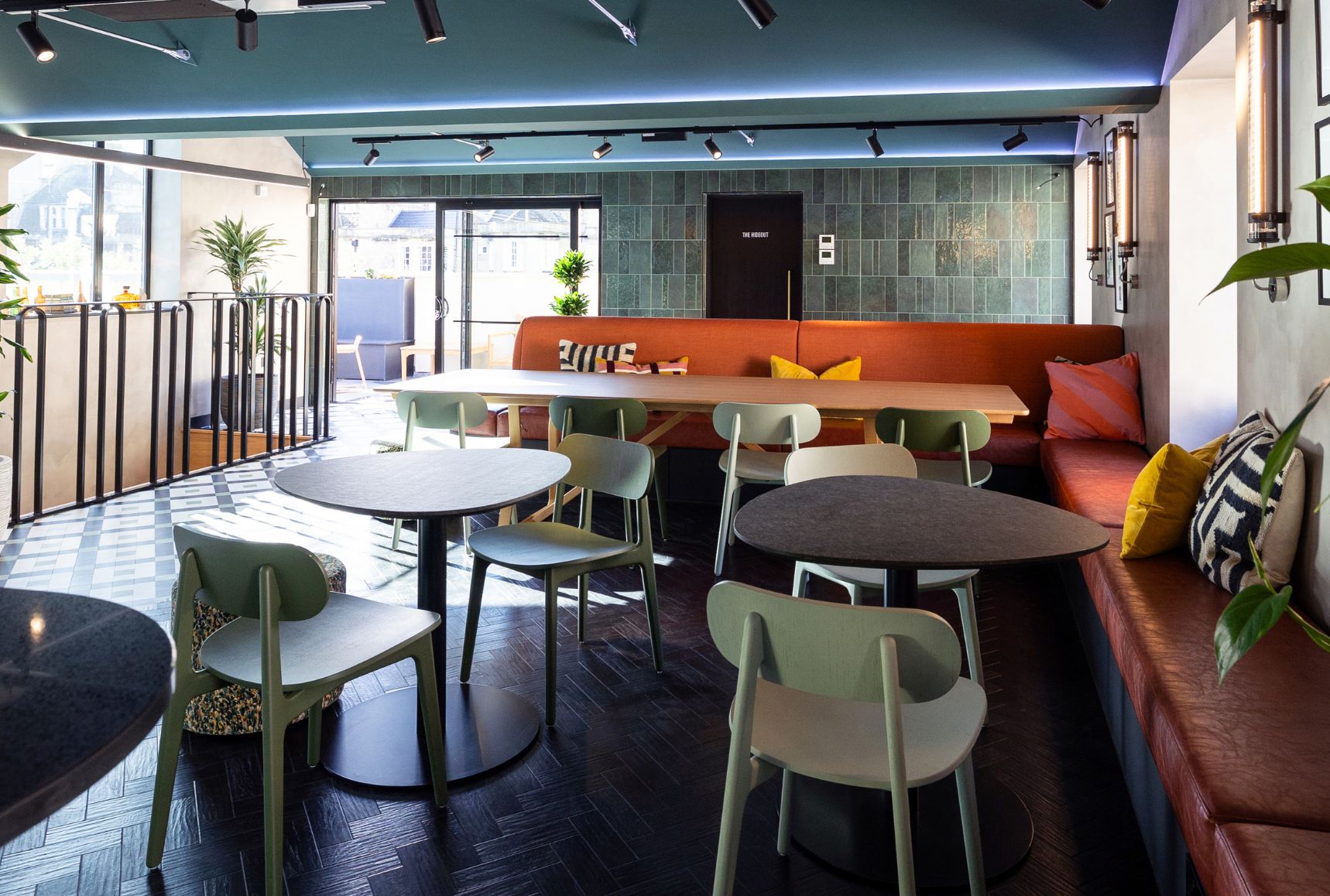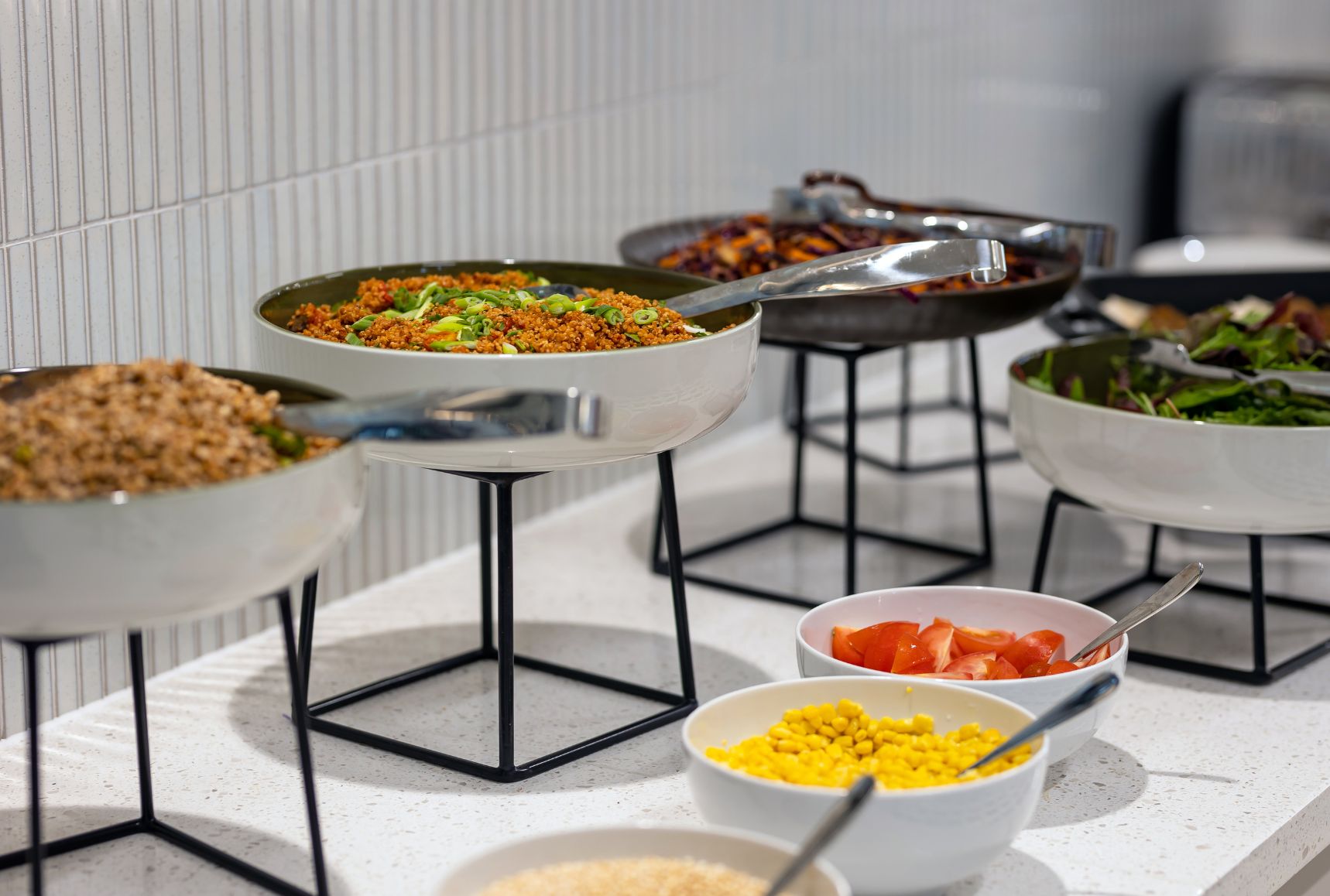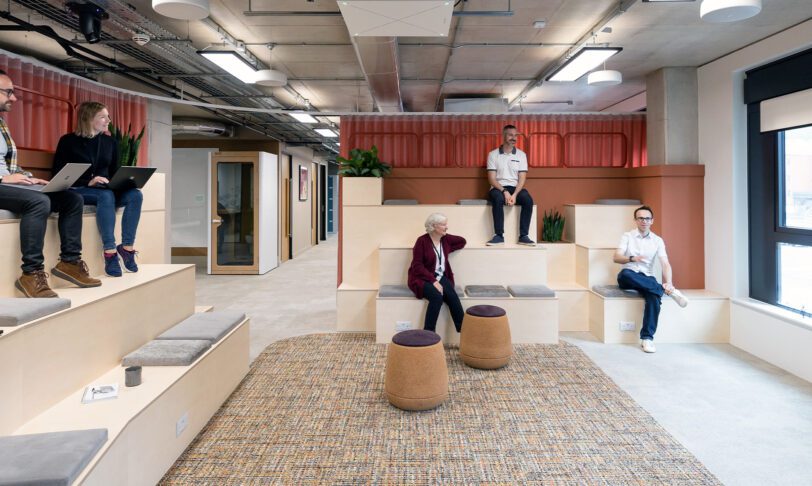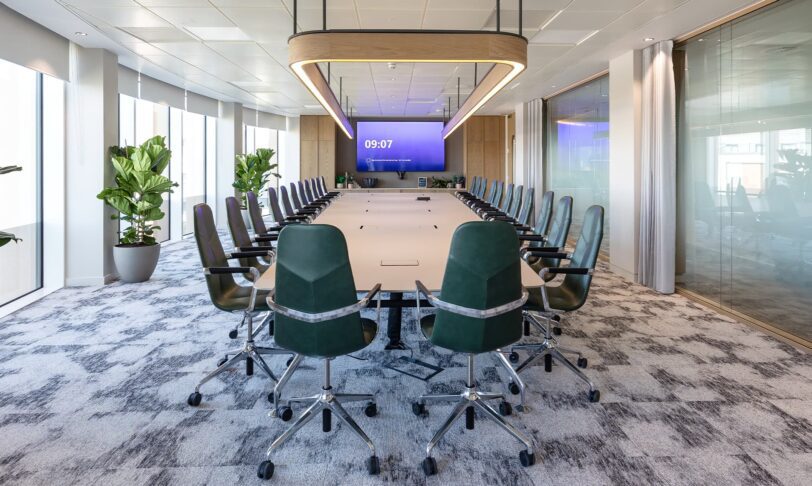Demise of the Desk Lunch
When a recent LinkedIn poll sparked debate around a seemingly very mundane topic, we couldn’t help but share our thoughts.
In the fast-paced world of modern work environments, the lunch break often gets relegated to a hurried affair or, worse, completely neglected. However, there is a growing movement advocating for the return to the ritual of packing lunch. In this article, we delve into the why, how, and the hidden benefits of taking lunch to the office, both for individuals and the organisations they work for.
Before we get into this, let’s get one thing straight. Where we advocate for bringing lunch to work, we mean taking a dedicated break away from your desk to prepare food and eat it in a sociable setting. Not to be confused with eating lunch at your desk, or what’s worse, eating at your desk whilst working. Like one LinkedIn user very accurately summed up: [this feels like a] “cow eating from the trough while being milked at the farm”.
Now that’s cleared up, let’s get into the nitty gritty.
The statistics
The poll, from LinkedIn News Europe, had interesting results. 53% of respondents said they bring a packed lunchbox to the office every day, with a following 22% answering ‘Sometimes, to save money’. Totting up to 75%, the rest answered ‘No’, aside from the 1% selecting ‘Other’.
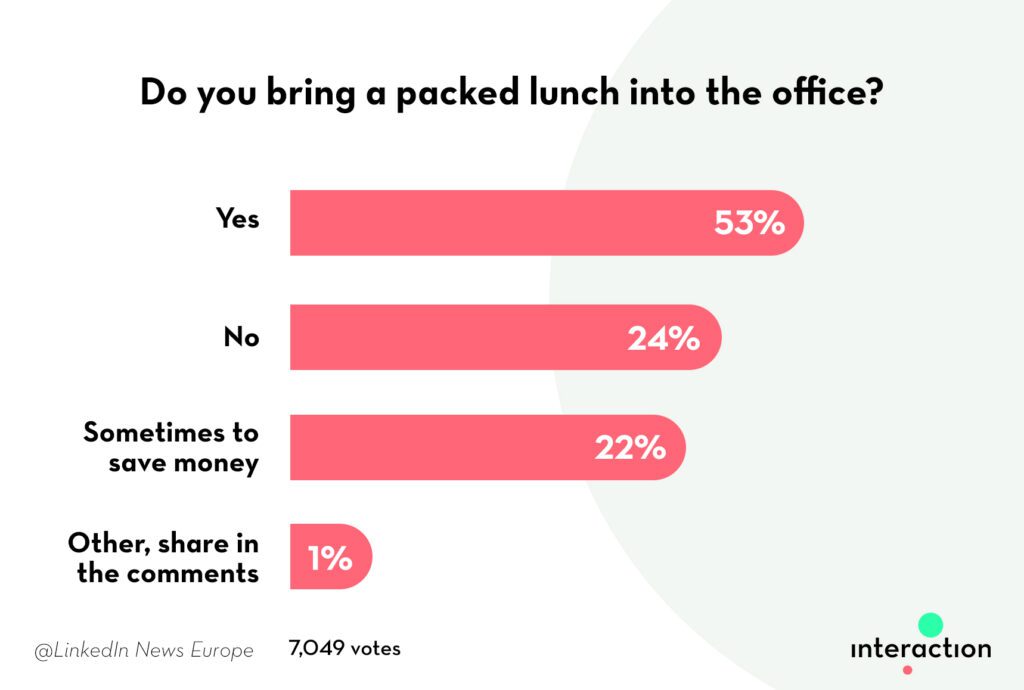
Why take lunch to work?
- Nutritional benefits: Taking your own lunch to work means you can pack foods that nourish your body, suit your individual preferences and fuel your productivity for the afternoon. Often, packed lunch food will be less processed, more balanced in nutrition and portions can be tailored to your specific requirements. For those of us with dietary restrictions, bringing our own lunch to work means we can have more choice with food options too. Win win.
- Reducing spending: Those amongst us who are money-savvy will save an average of £1225 every year by scrapping their £5 sandwich each working day. While not guaranteed, bringing a packed lunch is likely to be a great way to bring your weekly expenditure down. Impulse spending will also be eliminated, so no chance of being tempted by aisles of cheesy Wotsits and crinkle cut crisps.
- Cutting down on plastic: By packing lunch, you reduce your reliance on single-use containers and packaging. This is a great hidden benefit to bringing your own lunch to work, and a great way to encourage sustainable habits. As a business striving for sustainability, encouraging your employees to bring a packed lunch is a surefire way to cut down on plastic usage, and therefore your carbon footprint as a whole.
- Work-life balance: Embracing the ritual of brining lunch to work encourages the regular practice of self-care and grants employees the time to strike a balance between work and personal life. The act of preparing lunch ahead of time can improve mood, self-esteem and have other positive mental health outcomes.
The ‘against’
Despite there being a multitude of reasons why bringing your lunch into work is great, it’s important to consider the benefits of the other options. One LinkedIn User commented, “I always go out for lunch. I like to support local businesses” Another wrote, “Leaving the office for an hour is a great way to let the work go, take a breath and enjoy some time with your colleagues out of the office.”
Supporting local businesses is one of the primary arguments against packing lunch for work. By shopping locally, you keep money in your area. It’s likely that local businesses purchase their products from local suppliers, so in essence, you’re doing your local economy a favour by buying lunch in your local deli.
Another LinkedIn user, who works in a dark environment, argues that their lunchbreak is best spent getting outside to gain exposure to the sun and ‘get some vitamin D’. The counter comment was made that you can just take your lunchbox outside to eat it. A further user commented, “Who has time for that[?]”, bringing light to those whose time outside of work is prioritised with other commitments or responsibilities.
Wave goodbye to desk lunching
I’ll be honest, there’s no worse thought than trying to cram in bitefuls of a crumbly baguette in between answering calls, typing emails, and hunching over the desk. No matter how busy you are, we all owe ourselves the luxury of taking even 20 minutes away from our desk to enjoy some great food.
Meal breaks are a time to refresh your attention span, take your mind off the project that’s been troubling you all morning, and take a few deep breaths. Let’s not miss out on one of the main joys of life every week day – food!
Designing the office for lunchtime
Here at Interaction, we have a rule of ‘not eating lunch at your desk’. We have fostered a strong culture at Interaction, much of which is formed whilst munching on a salad at 12:30pm. You’ll often see a large group of us sat around our large ‘lunch table’ in our breakout & bar area chatting about a multitude of things, and really getting to know each other.
Office design should be carefully curated to optimise these culture-building moments. Breakout areas are best designed with a large table where everyone can sit together, and a variety of other spaces such as a breakfast bar and smaller tables. This way, people can choose if they’d like to sit and have a more sociable lunch or break off into smaller groups. Some groups of people, including those who are neurodiverse, may prefer eating away from a big group. Therefore, it’s important that there are private breakout spaces too so these people can still take a break from their desk. We talk more about this in our guide to designing workspaces for neurodiverse people.
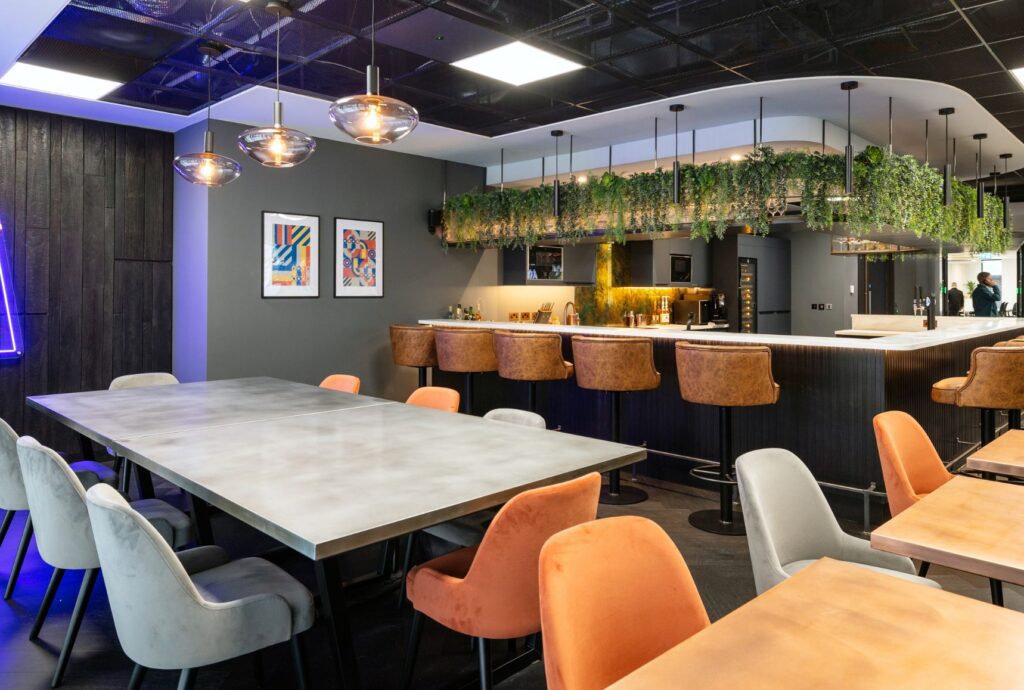
Outdoor spaces for taking breaks are also a great consideration, so that (in the warmer and dryer seasons), employees can step outside and get some fresh air. Eating outside can have a great affect on your personal wellbeing for the following reasons:
- It is a more relaxed setting
- Your body can function better
- You sleep better
- Mood can improve
- You breathe better
- Immune function is boosted
- Eyes can have some respite
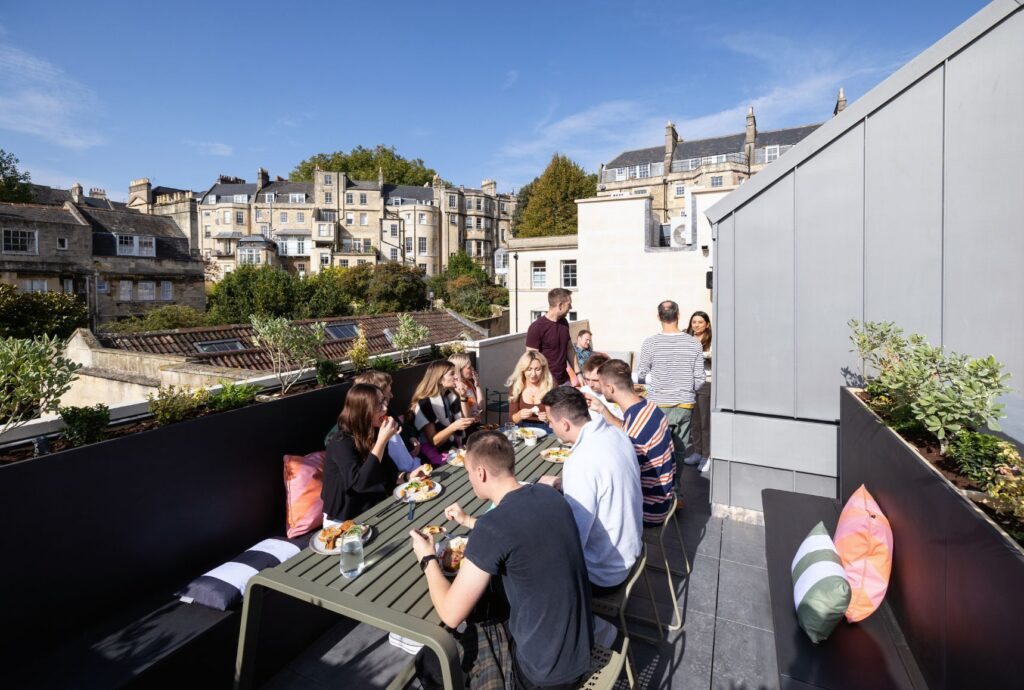
As we discussed in our guide to wellbeing in the workplace, we know that higher subjective wellbeing has been linked to greater labour productivity. Protecting your employees wellbeing is one of the most vital ways to improve staff retention, higher engagement, and better business outcomes as a result.
Designing your office with Interaction
At Interaction, our office design expertise can transform your results, by improving the wellbeing of your people, promoting their happiness, and seeing greater productivity consequently. It’s worth taking a look at your lunchtime strategy, as there might be more to it than what meets the eye. To find out more, check out our case studies here, and get in touch today on 01225 485600, or Chat with Charlie.
